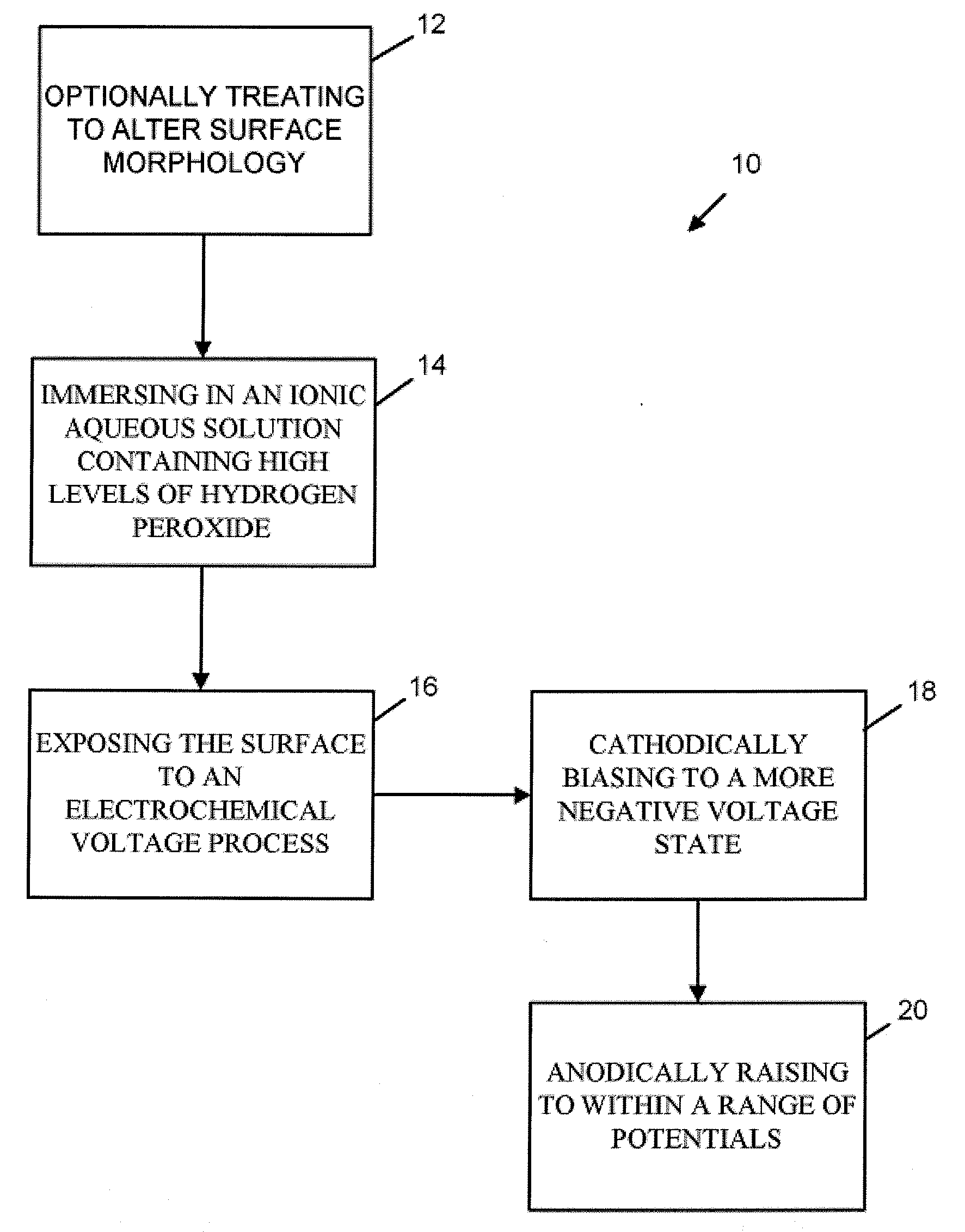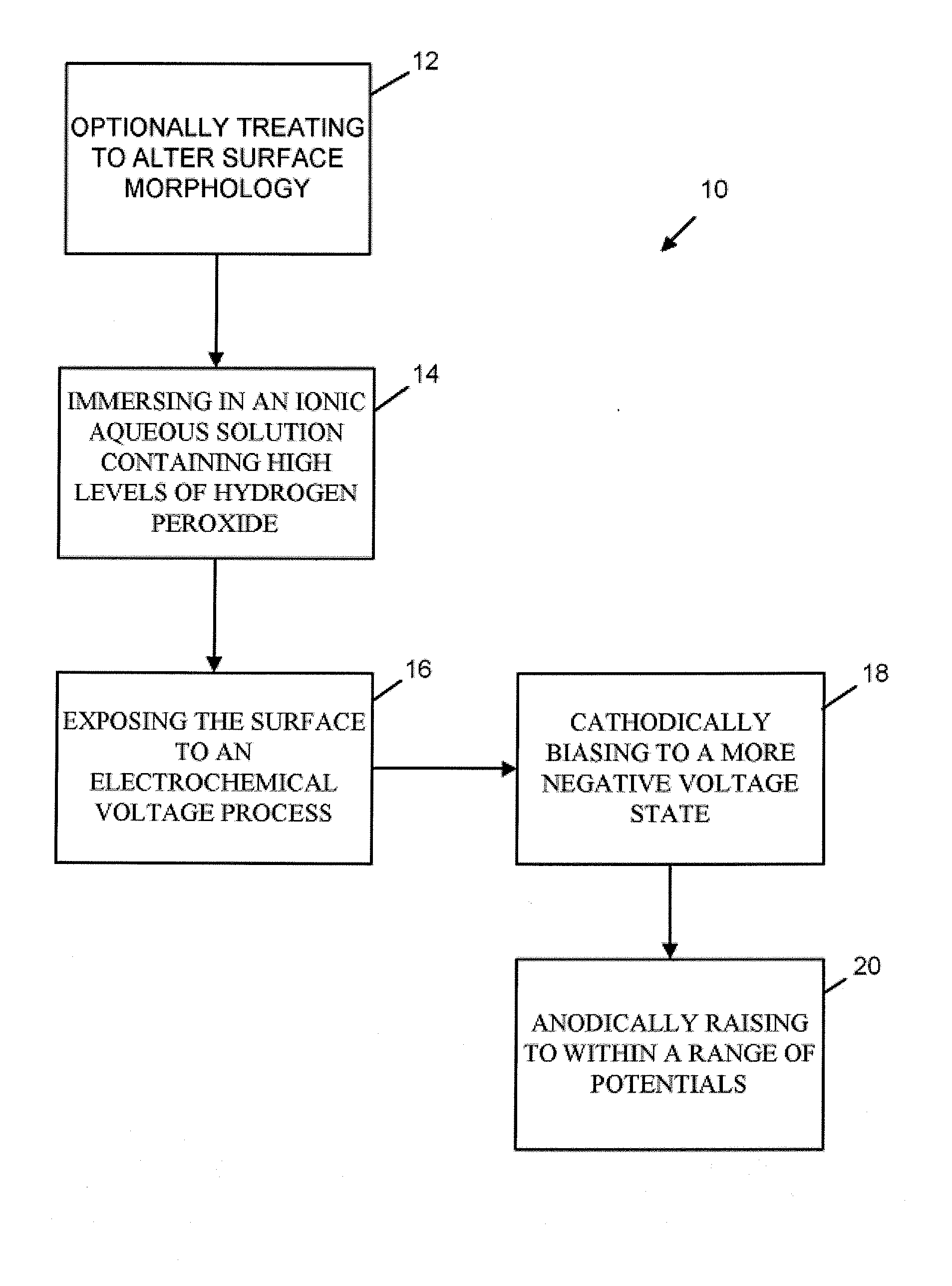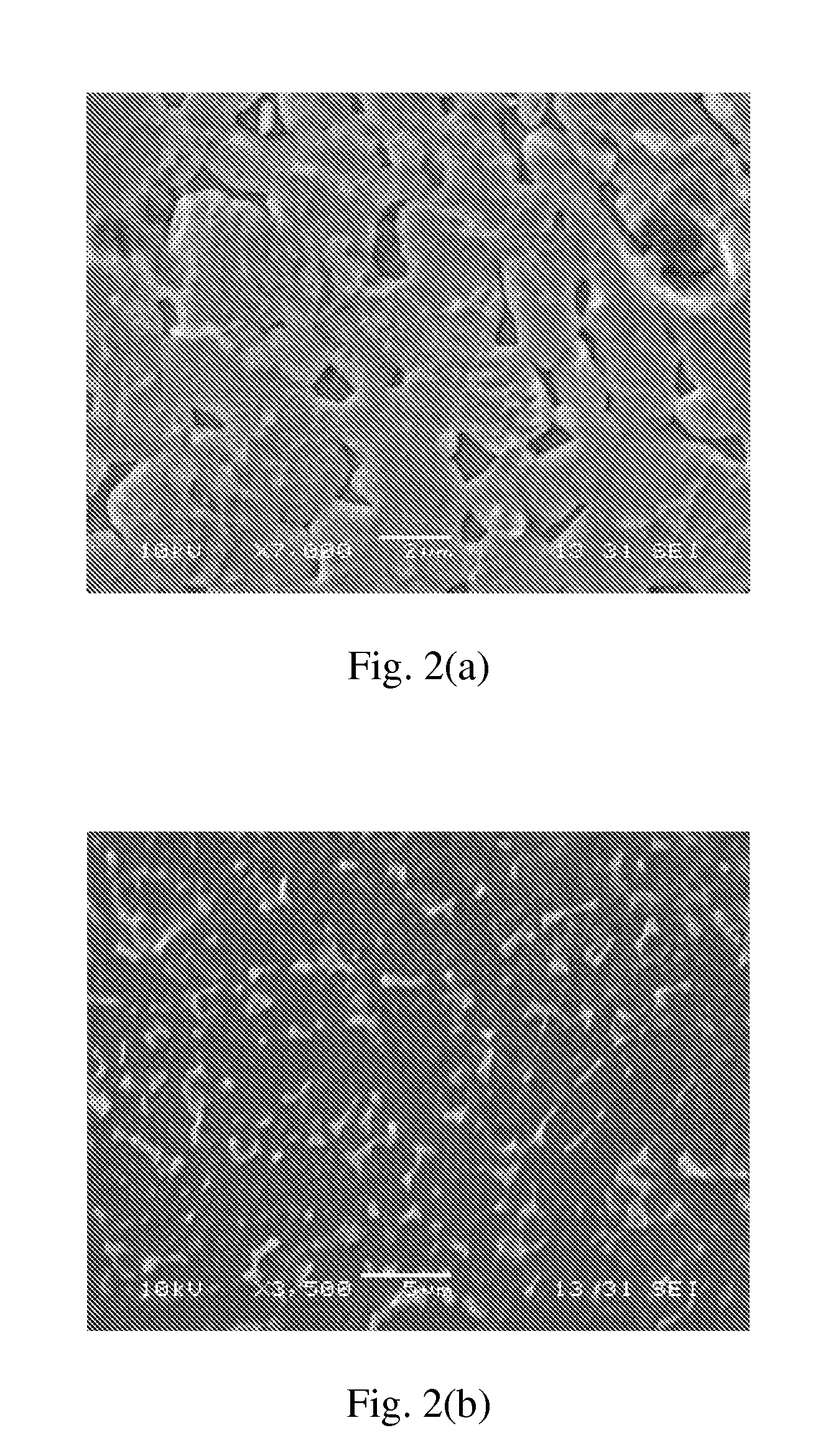Method For Preparing BioMedical Surfaces
a biomedical surface and surface technology, applied in the field of biomedical surfaces, can solve the problems of reducing the value of surfaces with recessed cavities, reducing the success rate of bone attachment, and often very expensive techniques to implement, and achieves less cost, stronger and robust interfacial adhesion, and enhanced bonding properties.
- Summary
- Abstract
- Description
- Claims
- Application Information
AI Technical Summary
Benefits of technology
Problems solved by technology
Method used
Image
Examples
example 1
[0030]Samples of medical grade Ti-6Al-4V-ELI (Extra-low-interstitial, ASTM F136 “Standard Specification for Wrought Titanium 6AL-4V ELI Alloy for Surgical Implant Applications”) were mechanically polished with increasing grit emory paper followed by polishing with 1.0, 0.3 and 0.05 μm Al2O3 particles suspended in water to yield a flat polished surface. These samples were then placed in an electrochemical cell and immersed in a PBS-H2O2 solution consisting of 0.154 M phosphate buffered saline (Sigma-Aldrich), and modified with 1 M H2O2. The sample was then electrochemical held at a voltage of −1V vs Ag / AgCl for 10 min, afterward the potential of the surface was scanned anodically at 1 mV / s up to 1 V vs Ag / Ag / Cl. At the end of this potential scan, the sample was removed from the solution, rinsed in DI water and allowed to dry. Afterward the sample was placed in the scanning electron microscope and imaged under secondary electrons. The resultant surface is seen in FIG. 5. The beta phas...
example 2
[0031]Samples of Ti-6Al-4V were prepared as in example 1 above. In this process, the sample is first held at a cathodic potential (−1V vs Ag / AgCl) for a period of 10 minutes and then immediately scanned up to more positive potentials at 1 mV / s and then held fixed for periods of time (typically 1000 s). The potential explored were: −0.5V, −0.1 V, and 0.1 V. These last two potentials relate to the active region of the polarization plots shown in FIG. 2, while −0.5V is still in the somewhat-cathodic potential region. The solution used to perform this was the same as that example 1 (1M H2O2 in PBS). After the process was complete, the samples were removed from the solution, rinsed in DI water, dried and imaged in the SEM. The results of Example 2 are seen in FIG. 6. The −0.5 V case (a) did not selectively dissolve the beta phase, while the other two (b) and (c) did.
example 3
[0032]The processed alloy was a commercially pure titanium alloy (ASTM F-36, grade 2). It was prepared and tested as described in example 1, where the potential was first held cathodic at −1.0 V and then scanned anodically to +1.0 V at 1 mV / s. Afterward, it was rinsed dried and imaged as above. The results are seen in FIG. 7, and indicate that the Cp-Ti surface developed micron-scale and nano-scale pits in the surface.
[0033]The method of the present invention may thus be used for the preparation of Ti-alloy surfaces for implantation into biological systems to enhance the interaction between the body and the implant. This process could be applied to a wide variety of medical devices where implant-tissue interactions are important. These include bone implant devices, dental implants and potential cardiovascular implants. The resulting effect allows modification of surfaces of titanium alloys to develop micron or smaller (nano-scale) surface topographic features that may enhance these ...
PUM
| Property | Measurement | Unit |
|---|---|---|
| Molar density | aaaaa | aaaaa |
| Molar density | aaaaa | aaaaa |
| Molar density | aaaaa | aaaaa |
Abstract
Description
Claims
Application Information
 Login to View More
Login to View More - R&D
- Intellectual Property
- Life Sciences
- Materials
- Tech Scout
- Unparalleled Data Quality
- Higher Quality Content
- 60% Fewer Hallucinations
Browse by: Latest US Patents, China's latest patents, Technical Efficacy Thesaurus, Application Domain, Technology Topic, Popular Technical Reports.
© 2025 PatSnap. All rights reserved.Legal|Privacy policy|Modern Slavery Act Transparency Statement|Sitemap|About US| Contact US: help@patsnap.com



